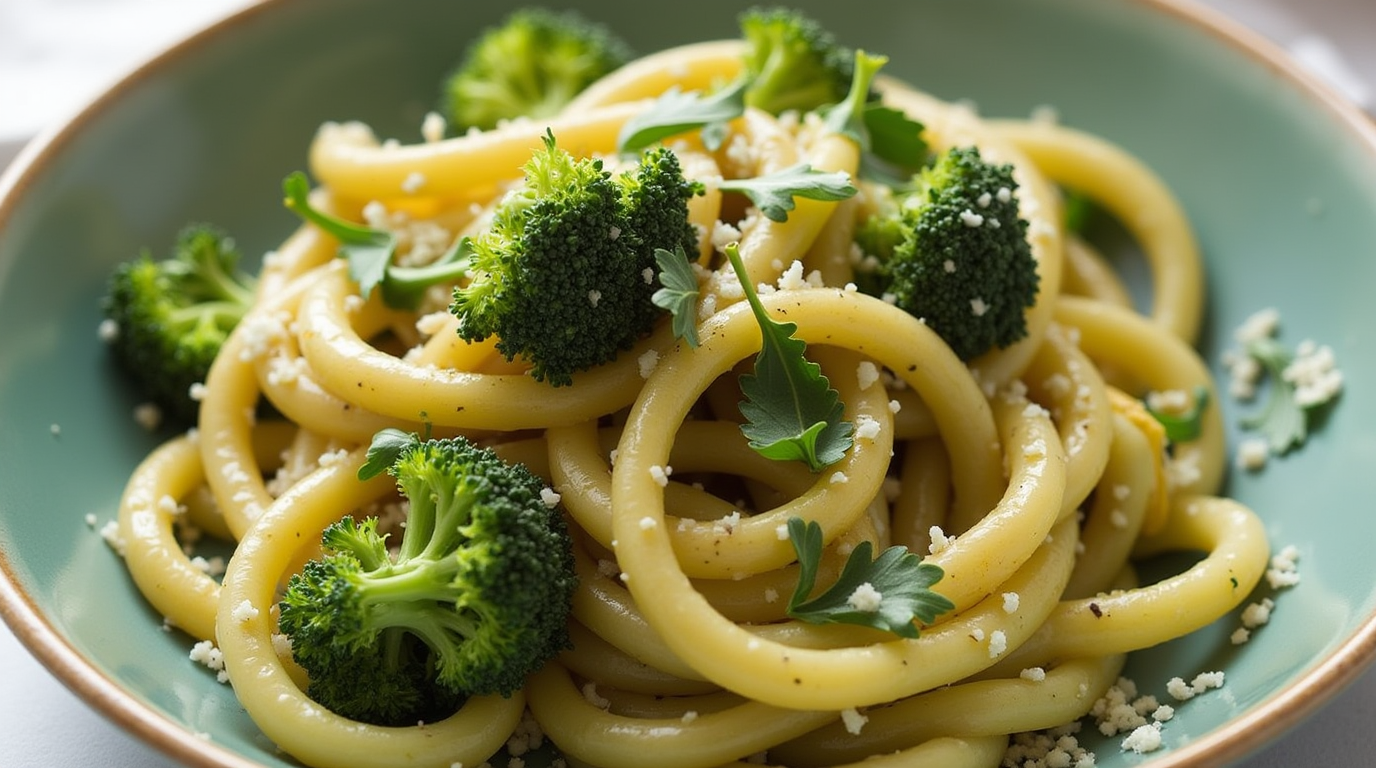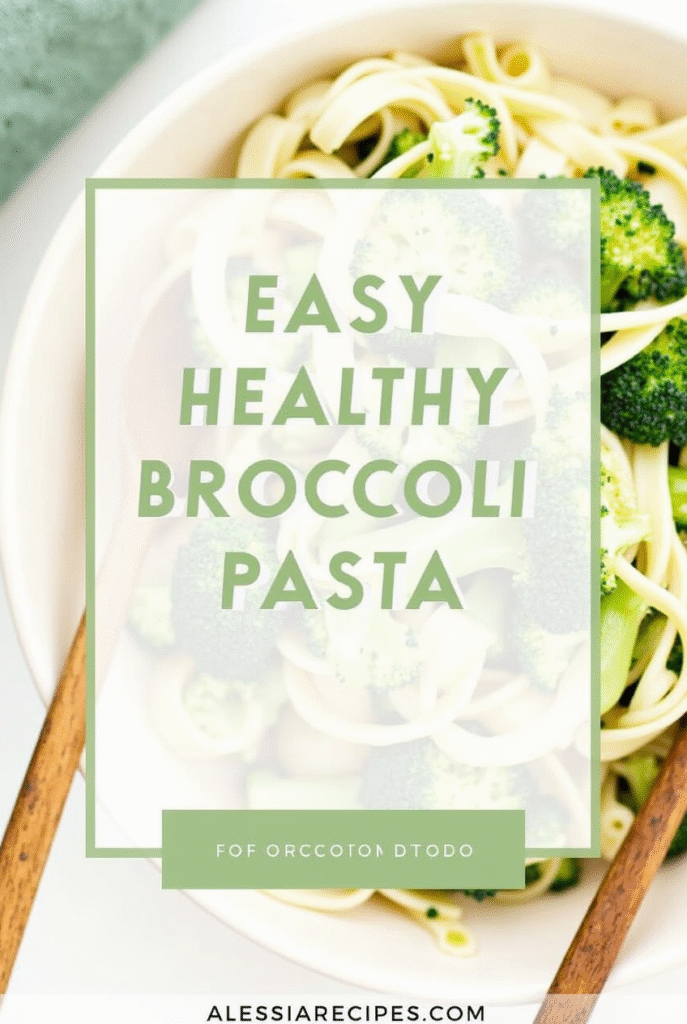The No-Fail Broccoli Pasta Recipe: A Chef’s Secret for Perfect Results
Broccoli pasta recipe enthusiasts, rejoice! We’ve perfected a dish that takes as little as 12 minutes to prepare, making it our go-to emergency dinner when time is short but hunger is real. This simple broccoli pasta recipe requires just 8 ingredients while packing impressive nutritional benefits from fresh broccoli—including fiber, vitamin C, vitamin K, and potassium. Additionally, our easy broccoli pasta recipe offers incredible versatility, whether you prefer a one-pan approach or want to incorporate two whole heads of broccoli for an extra vegetable boost.
Certainly, what makes this healthy broccoli pasta recipe stand out is its adaptability to various dietary preferences. The garlic broccoli pasta recipe creates a flavorful foundation that works beautifully with ingredients like lemon juice and olive oil to elevate the taste profile. If you’re looking for a creamier texture without the heaviness, we’ve discovered that Greek yogurt makes an excellent substitute for heavy cream. Throughout this guide, we’ll share our chef-tested techniques for pasta with broccoli recipes that deliver perfect results every time—no culinary degree required!
The Essential Ingredients for Broccoli Pasta
Creating the perfect broccoli pasta recipe begins with understanding its core ingredients. Let’s explore what makes this dish so delicious yet remarkably simple to prepare.
Fresh vs frozen broccoli
The foundation of any pasta with broccoli recipes starts with the star vegetable itself. Fresh broccoli delivers vibrant color and texture, making it ideal when you want distinct florets in your dish. Notably, many chefs recommend using the entire broccoli—including the stems—as they’re packed with nutrients and add substance to your sauce. Just peel the fibrous outer layer of the stems before cooking.
Surprisingly, frozen broccoli can sometimes contain more riboflavin (vitamin B2) than fresh varieties. This makes frozen broccoli an excellent energy-boosting, immune-supporting alternative, especially during winter months. Furthermore, since frozen broccoli is flash-frozen at peak ripeness, it often retains more nutrients than fresh broccoli that’s been sitting in your refrigerator for days.
Choosing the right pasta shape
The pasta shape you select significantly impacts your final dish. Short pasta shapes generally work best for broccoli pasta because they capture the sauce effectively. Consider these options:
- Orecchiette (“little ears”): Their cup-like shape cradles sauce perfectly
- Penne or rigatoni: Ridges help the sauce cling to the pasta
- Gemelli, fusilli, or farfalle: These shapes complement the size of broccoli florets
For saucier variations, fettuccine or linguine pairs wonderfully with creamy broccoli sauces.
Olive oil, garlic, and seasoning essentials
Quality ingredients make all the difference in a simple broccoli pasta recipe. Extra-virgin olive oil provides the richest flavor foundation and creates a flavorful base when infused with garlic. Rather than mincing garlic, try crushing or slicing it and slowly browning in olive oil for a mellower flavor that doesn’t overpower the dish.
Salt plays a crucial role—both in the pasta water (“it should taste like the sea”) and for seasoning the final dish. Red pepper flakes add warmth without overwhelming heat.
Optional add-ins: lemon, chili flakes, cheese
Elevate your healthy broccoli pasta recipe with thoughtful additions. Lemon zest and juice bring brightness that balances the earthy broccoli. For cheese, freshly grated Parmesan or Pecorino Romano creates a savory, creamy finish that melts beautifully into the sauce.
For depth of flavor, consider adding capers minced into a paste, or for protein, incorporate grilled chicken, shrimp, or tofu. A spoonful of Greek yogurt creates creaminess without heaviness, while nutritional yeast offers a cheese-like flavor for vegan versions.
Step-by-Step: How to Make the No-Fail Broccoli Pasta
The magic of our no-fail broccoli pasta recipe lies in its simple yet precise technique. Once you master these steps, you’ll create a dish that’s both delicious and nutritious with minimal effort.
1. Boil broccoli and pasta together
The one-pot approach saves time and maximizes flavor. Fill a large pot with water, add salt generously, and bring to a boil. For perfect timing, add your broccoli florets when the pasta has about 5 minutes left to cook. Alternatively, cook broccoli first for about 8 minutes until bright green, then add pasta to the same water. This method ensures both ingredients finish cooking simultaneously.
2. Sauté garlic and seasonings
While pasta and broccoli cook, heat olive oil in a saucepan over medium heat. Add thinly sliced garlic and cook until lightly golden but not burned—typically 30-60 seconds. Moreover, adding red pepper flakes during this stage infuses the oil with gentle heat. Keep stirring constantly to prevent burning, as burned garlic will impart bitterness to your healthy broccoli pasta recipe.
3. Mash or blend broccoli for sauce
For a creamy texture, transfer cooked broccoli to a blender along with some pasta cooking water. Blend until smooth, or use a potato masher directly in the pan for a chunkier consistency. This technique transforms ordinary pasta with broccoli into a luscious, sauce-coated dish that clings beautifully to each pasta piece.
4. Combine pasta, sauce, and cheese
Return drained pasta to the pot and add your broccoli sauce. Incorporate freshly grated cheese—Parmesan works wonderfully—stirring until melted. Essentially, the heat from the pasta will help melt the cheese into the sauce, creating a cohesive garlic broccoli pasta recipe that’s both simple and satisfying.
5. Adjust texture with pasta water
Here’s the chef’s secret: reserved pasta water is your texture control. The starchy water helps bind the sauce to the pasta while creating the perfect consistency. Add small splashes (2-3 tablespoons at a time) until you reach your desired thickness. Remember, the sauce will thicken slightly as it sits, so aim for a slightly looser consistency than your final goal.
Chef’s Tips for Perfect Results Every Time
Behind every flawless broccoli pasta dish lies a handful of professional techniques that separate good results from extraordinary ones. These chef-tested tips will take your simple broccoli pasta recipe from basic to brilliant without complex methods.
Salt your water generously
First and foremost, properly salted pasta water isn’t just tradition—it’s essential chemistry. Your pasta water should taste like seawater, which typically means about 1-2 tablespoons of salt per pound of pasta. This step is crucial because pasta absorbs water as it cooks, meaning it also absorbs that salinity, seasoning the pasta from within rather than just on the surface.
Cook pasta al dente
To put it differently, al dente pasta (with a slight firmness when bitten) isn’t just an Italian preference—it’s crucial for healthy broccoli pasta recipes. Given these points, always subtract 1-2 minutes from package cooking times and test frequently. Al dente pasta holds its shape better when tossed with sauce and continues cooking slightly after draining. As a bonus, firmer pasta has a lower glycemic index, making your easy broccoli pasta recipe more nutritionally balanced.
Save pasta water for sauce
This cloudy, starchy liquid is practically liquid gold for your garlic broccoli pasta recipe. Reserve at least 1 cup before draining. The dissolved starches act as a natural thickener and emulsifier, helping oil-based ingredients combine smoothly with water-based ones. To be sure, this technique creates silky sauces that cling perfectly to pasta rather than pooling at the bottom of your plate.
Use freshly grated cheese
Pre-grated cheese contains anti-caking agents that prevent proper melting. Consequently, taking a minute to grate cheese fresh makes a dramatic difference in your pasta with broccoli recipes. Parmesan, Pecorino Romano, or even sharp cheddar all work beautifully—the freshly grated texture melts evenly and creates a creamier finish.
Taste and adjust seasoning
In contrast to following recipes blindly, professional chefs constantly taste and adjust. After combining all ingredients, pause to taste your broccoli pasta recipe, considering salt, acid, and heat. A splash of lemon juice brightens flavors, a drizzle of high-quality olive oil adds richness, and a final grind of black pepper provides aromatic depth. Trust your palate—it’s often more reliable than strict measurements.
Creative Variations to Try
Once you’ve mastered the basic broccoli pasta recipe, it’s time to explore creative variations that can transform this simple dish into something extraordinary. The beauty of this versatile recipe lies in how easily it adapts to different flavor profiles and dietary preferences.
Add lemon zest for brightness
The addition of lemon zest and juice instantly elevates your broccoli pasta with vibrant citrus notes. Indeed, many chefs recommend adding lemon zest directly to the sauce for a “bright, zippy effect” that beautifully balances the earthiness of broccoli. For optimal results, add 2 teaspoons of lemon zest and 2 tablespoons of fresh juice at the end of cooking. Unlike using dried seasonings, fresh lemon creates what some chefs call a “faux fresh effect” when drizzled over the finished dish.
Make it spicy with red pepper flakes
Heat enthusiasts can easily customize the spice level of their healthy broccoli pasta recipe with red pepper flakes. Start with ½ teaspoon of crushed red pepper flakes added to the oil while sautéing garlic. This method allows the spicy oils to infuse throughout the dish rather than providing isolated bursts of heat. Subsequently, you can offer additional red pepper flakes at the table, allowing each diner to adjust according to their preference.
Add protein: grilled chicken or shrimp
Transform your simple broccoli pasta recipe into a complete meal by incorporating protein. Leftover rotisserie chicken (about 1½ cups) works wonderfully, yet you can alternatively add grilled chicken cutlets, shrimp, or even canned tuna in olive oil. Whenever adding pre-cooked protein, fold it in at the final stage just long enough to warm through without overcooking.
Make it vegan with nutritional yeast
Nutritional yeast offers a “cheesy, savory flavor” that makes dairy-free versions of garlic broccoli pasta recipe equally delicious. Sprinkle 2-3 tablespoons directly into your sauce, or create a dairy-free “parmesan” topping. Alternatively, you can blend cashews with nutritional yeast for a creamy element. Yet another option is using lentil or chickpea pasta for added plant-based protein.
Use Greek yogurt for a creamy twist
For a healthier alternative to heavy cream, incorporate room-temperature Greek yogurt into your pasta with broccoli recipes. This creates creaminess without excessive calories or fat. Altogether, the key technique involves adding ¼ cup of plain Greek yogurt at the very end of cooking, after removing from heat, while whisking constantly to prevent curdling. This variation pairs particularly well with lemon and garlic for a balanced flavor profile.
Conclusion
Throughout this guide, we’ve shared everything needed to master our beloved broccoli pasta recipe. This 12-minute wonder truly stands as a perfect emergency meal option without sacrificing nutrition or flavor. Most importantly, the versatility of this dish allows endless customization based on your preferences and pantry inventory.
Undoubtedly, what makes this recipe special lies in its simplicity paired with chef-level techniques. The thoughtful combination of properly cooked pasta, perfectly prepared broccoli, and quality ingredients creates something greater than the sum of its parts. Whether you choose fresh or frozen broccoli, select the ideal pasta shape, or opt for creative variations, success awaits with these foundational principles.
Remember those chef’s secrets we’ve shared? Salt your water generously, cook pasta al dente, save that starchy pasta water, and always use freshly grated cheese. These small details ultimately transform a basic dish into something restaurant-worthy.
The beauty of this recipe extends beyond its taste. Quick preparation time, minimal ingredients, and substantial nutritional benefits make it a practical addition to your regular meal rotation. Additionally, the adaptability for various dietary needs means everyone at your table can enjoy their perfect version.
We hope this broccoli pasta recipe becomes your reliable kitchen companion for busy weeknights and impromptu gatherings alike. Give these techniques a try, experiment with our suggested variations, and soon you’ll discover why this humble dish has earned its place as our go-to comfort food. Happy cooking!
FAQs
Q1. How long does it take to make this broccoli pasta recipe? This quick and easy broccoli pasta recipe can be prepared in as little as 12 minutes, making it an ideal choice for a fast and satisfying meal.
Q2. Can I use frozen broccoli instead of fresh? Yes, you can use frozen broccoli. It’s often flash-frozen at peak ripeness and can retain more nutrients than fresh broccoli that’s been stored for a while. It’s a great alternative, especially during winter months.
Q3. What’s the best pasta shape to use for broccoli pasta? Short pasta shapes like orecchiette, penne, or fusilli work best as they capture the sauce effectively. For creamier versions, longer pasta like fettuccine or linguine can be excellent choices.
Q4. How can I make the broccoli pasta creamy without using heavy cream? You can achieve a creamy texture by using Greek yogurt as a healthier alternative to heavy cream. Add about 1/4 cup of room-temperature Greek yogurt at the end of cooking, whisking constantly to prevent curdling.
Q5. What’s the secret to perfect broccoli pasta every time? The key is to salt your pasta water generously, cook the pasta al dente, save some pasta water for adjusting the sauce, use freshly grated cheese, and always taste and adjust seasoning before serving.


